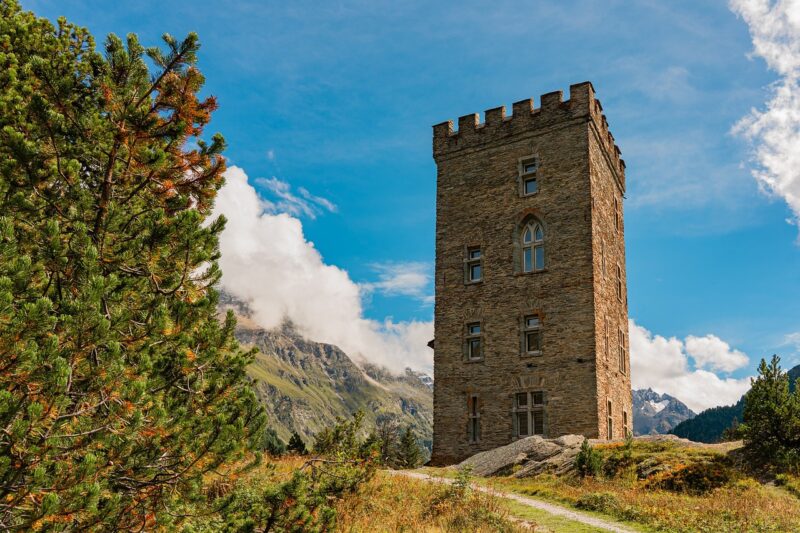
Hidden passageways in historic buildings offer a glimpse into a world of mystery, intrigue, and architectural ingenuity. These concealed corridors and secret rooms were once used for various purposes, from facilitating clandestine meetings to allowing servants to move unseen. As we delve into the rich history of these architectural wonders, we uncover fascinating stories that add depth to our understanding of the structures we admire today.
1. Historical Context: Why Hidden Passageways?
Hidden passageways date back centuries, often constructed during times of political instability, social upheaval, or architectural experimentation. In Europe, for instance, during the Middle Ages and Renaissance, many castles and estates featured concealed corridors. These corridors served various vital roles:
- Safety and Security: Many noble houses built hidden passageways as a means of escape during sieges or raids. Such passages allowed residents to evade capture by intruders or enemy forces.
- Discreet Movement: Servants and staff could move quietly between rooms without disturbing the inhabitants. These hidden routes also provided a means for important guests to navigate the residence without drawing attention.
- Surveillance & Espionage: Some passageways were designed to allow the noble occupants to spy on their guests or conduct secret meetings without fear of being discovered.
Understanding the context in which hidden passageways were built significantly enhances their allure. Let’s explore some famous historic buildings known for their secrets.
2. Notable Buildings with Hidden Passageways
Several historic structures across the world boast remarkable hidden passageways that continue to captivate visitors and historians alike. Here’s a look at some notable examples:
2.1 The Tower of London
A rich tapestry of history threads through the Tower of London, which served as a royal palace, fortress, and prison. One of the most intriguing features of the Tower is its hidden escape routes. The ‘Traitors’ Gate’ is a well-known entrance into the tower that echoed with the footsteps of many who met untimely ends. Beyond that, hidden corridors connected various parts of the Tower, allowing royal prisoners a chance to escape fate.
2.2 Château de Chambord, France
Known for its distinctive French Renaissance architecture, Château de Chambord is a prime example of hidden passageways. The castle has a complex layout with secret staircases and concealed doors, allowing princesses and their courtiers to interact discreetly. Local legends also speak of secret passages that lead to hidden treasures.
2.3 The Winchester Mystery House, California
This sprawling estate is famous for its chaotic architecture and numerous hidden passageways. The house was constructed by Sarah Winchester, who believed she was haunted by the spirits of those killed by Winchester rifles. The house features staircases leading to nowhere and doors opening to walls, showcasing a design seemingly meant to confuse unseen enemies.
3. The Architectural Significance of Hidden Passageways
Hidden passageways illustrate the ingenuity of architects and builders throughout history. Beyond their functional purposes, these secretive structures highlight architectural styles, design philosophies, and the cultural values of their time:
- Innovation: Unexpected designs demonstrate creative problem-solving and innovation. Many hidden passageways incorporated elements like moving bookshelves, disguised doors, and secret staircases that showcase a meticulous attention to detail.
- Preservation of History: As these buildings have aged, efforts towards their preservation have led to the further discovery of hidden passageways. This signifies the importance of safeguarding these architectural gems for future generations.
- Cultural Reflections: The presence of hidden passageways in historic buildings reflects cultural attitudes towards privacy, secrecy, and societal hierarchies prevalent during their construction.
Exploring these hidden paths reveals much about the social infrastructure and class dynamics of bygone eras, making their examination crucial for a complete understanding of architectural history.
4. The Mystique and Modern-Day Discoveries
The allure of hidden passageways continues to captivate modern explorers and historians. Today, innovations in technology, such as ground-penetrating radar and laser scanning, are revealing new hidden routes and chambers that were once undetectable.
Modern preservation efforts often involve archaeological digs and restoration projects, allowing researchers to uncover long-forgotten secrets within historic buildings. For example, in 2022, during restoration work at the historic Casa Loma in Toronto, a previously unknown hidden passageway was discovered, leading to new insights into the estate’s history.
This trend of rediscovery not only stimulates academic curiosity but also spikes public interest, often resulting in the creation of exhibits that showcase these hidden features.
5. Conclusion: Unearthing the Hidden Stories
The hidden passageways within historic buildings are portals to the past, revealing layers of intrigue that transcend time. Each corridor carries stories of safety, secrecy, and architectural excellence, reminding us that what lies beneath leaves a profound legacy.
In our quest to learn about history, unearthing these secrets enriches our understanding of human connection and the experiences of those who inhabited these magnificent structures. As we delve deeper into architectural history, we must continue to embrace the importance of storytelling embedded within these hidden passageways, for they house the whispers from ages long gone.
The persistent intrigue surrounding hidden passageways ensures that they remain an essential chapter in the vast narrative of architectural history, waiting to be uncovered by curious minds like yours.







